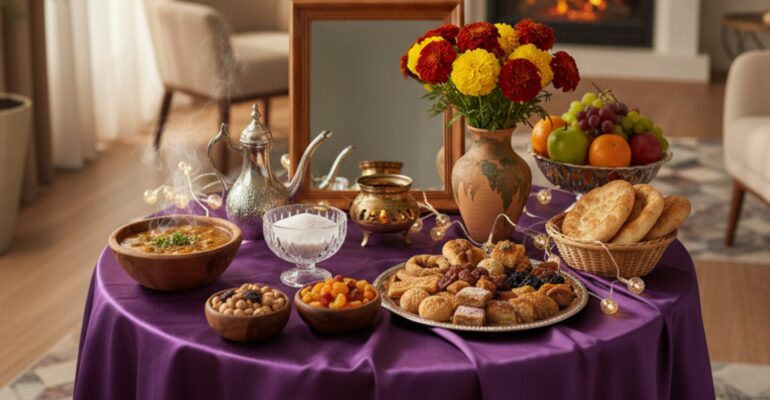Mehregãn: The Ancient Persian Autumn Festival of Light and Friendship
Mehregãn: The Ancient Persian Autumn Festival of Light and Friendship
Most people know Nowruz, the Persian New Year celebrated in spring, but fewer are aware that in ancient Iran, there were actually two great “New Year” festivals:
Nowruz in spring, marking the vernal equinox.
Mehregãn in autumn, marking the autumnal equinox.
Together with Sadeh, they formed the three most important seasonal celebrations of ancient Iranians.
Origins and Antiquity
The roots of Mehregãn stretch back at least 6,000 years, to the legendary reign of King Fereydun in Persian mythology. Historical records suggest that kings and common people alike honored this festival, which was tied to the cycles of nature rather than any single religion or ethnicity.
Meaning of “Mehr”
The word Mehr (or Mitra in ancient Indo-Iranian languages) means light, love, kindness, and covenant.
In Zoroastrian tradition, Mithra/Mehr is the divine figure associated with truth, friendship, and the keeping of promises.
Symbolically, Mehr is linked with the sun, the giver of warmth and life.
The 16th day of every month in the ancient calendar was dedicated to Mehr, which made the 16th day of the 7th month (Mehr) a sacred day; hence, the festival’s date.
Philosophy of the Festival
At its heart, Mehregãn is about:
Thanksgiving to God for the blessings of harvest and abundance.
Celebrating friendship and human bonds, strengthening kindness and love among people.
Renewing promises of honesty, unity, and loyalty.
Just as Nowruz welcomes renewal in spring, Mehregãn celebrates balance and gratitude in autumn.
Celebration and Traditions
In ancient times:
The day began with people wearing new clothes, burning incense, and setting a special festive table.
The table (similar to today’s Nowruz Haft-Sin) included:
The Mehregan Table
Much like the Haft-Sin of Nowruz, Mehregan has its own ceremonial table, beautifully decorated with symbolic items. Traditionally, it includes:
A purple tablecloth (symbol of royalty and spirituality).
A vase of marigold flowers, representing the sun and life.
A bowl of Āsh-e Haft Gheleh (soup of seven grains), symbolizing nourishment and the bounty of harvest.
A basket of local Iranian bread, for prosperity and sustenance.
A dish of sugar and a jug of sweet syrup with milk, for sweetness and blessings in life.
A rosewater sprinkler (golābdān), representing purity and fragrance.
A small fire brazier, symbolizing warmth, energy, and the eternal flame.
A dish of sweets and another of nuts (ājīl), for joy and abundance.
A bowl filled with seasonal fruits, celebrating nature’s gifts.
- A mirror, reflecting truth and self-knowledge.
Families and communities would gather around this table, wearing new clothes, burning incense, and sharing food and drink. Kings in ancient times also distributed gifts and held audiences in honor of the day.
Although Mehregãn is less widely celebrated today compared to Nowruz, it remains alive among Zoroastrians in Iran and abroad, and is gradually being revived by cultural enthusiasts as a way to reconnect with Persian heritage.
Why It Still Matters
Mehregãn reminds us of values that transcend time and culture:
Gratitude for the gifts of nature.
The importance of truth and keeping promises.
The beauty of friendship, kindness, and light over darkness.
In a world often divided, this 6,000-year-old celebration carries a timeless message: cherish life’s blessings, honor your bonds, and share love generously.



